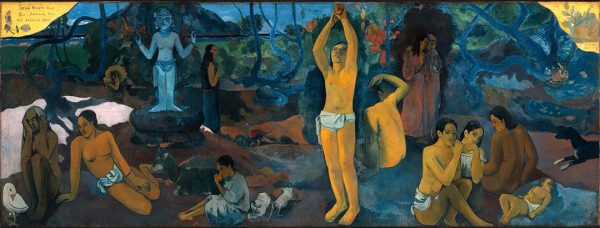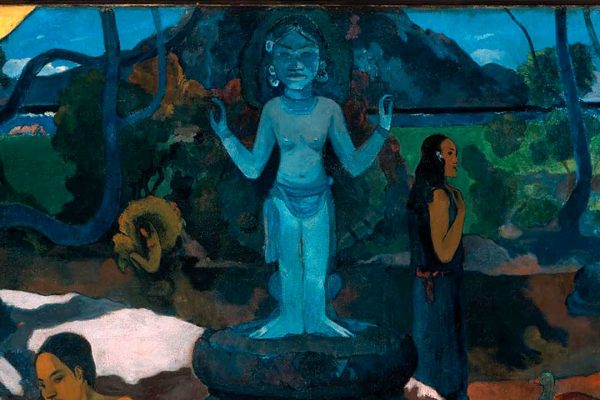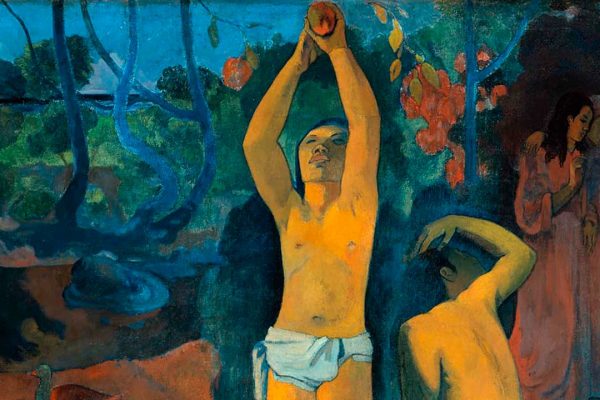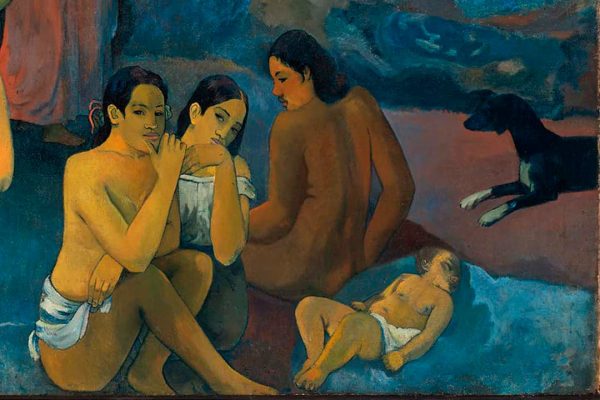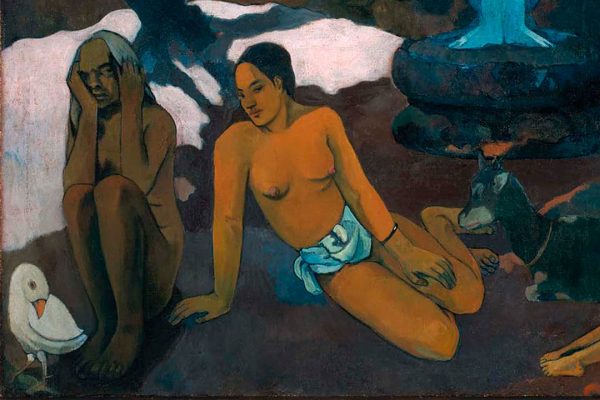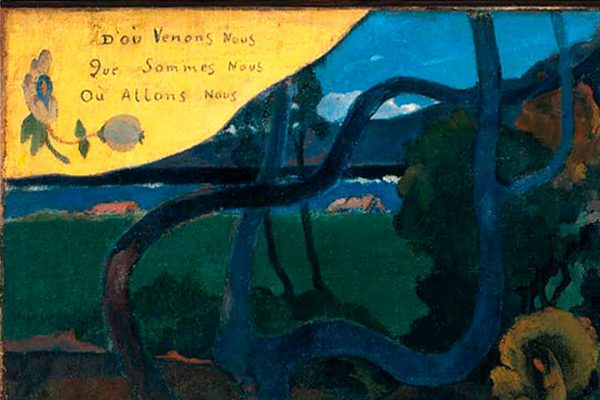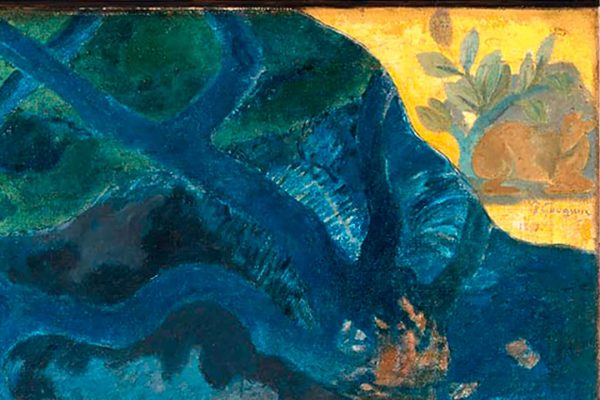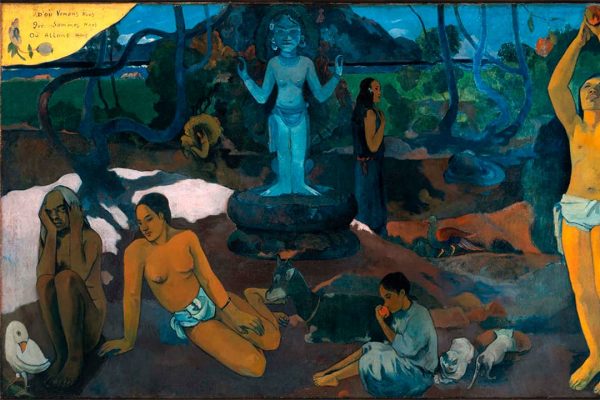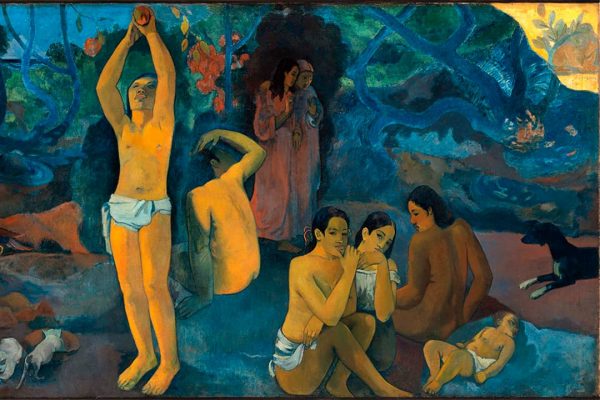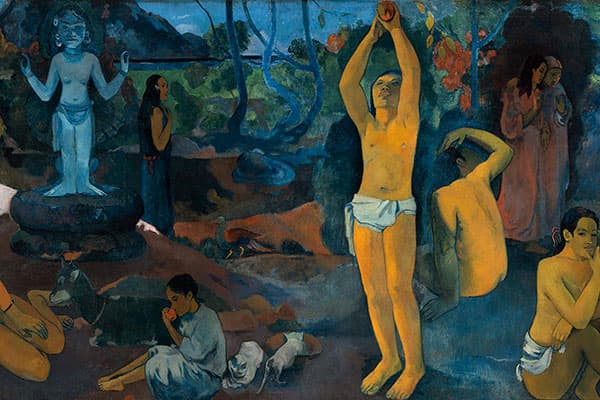Paul Gauguin · D’où venons-nous?
1897 – Oil on canvas – Museum of Fine Arts, Boston
Where do we come from? What are we? Where are we going?
Gauguin himself stated that after painting “Where do we come from? What are we? Where are we going” he tried to commit suicide. We do not know for certain if that confession is true, but it is a fact that just before painting his masterwork, a series of events followed each other in a dramatic sequence, as presaging a tragic and bitter end for his romance with Tahiti.
Firstly, his economic situation became extremely difficult –however, he rejected an important amount of money offered by the Ministry because he considered it a “charity”- while the syphilis and the alcoholism turned his physical situation into a torture. Nevertheless, the worst hit arrived by mail: in the spring of 1891, a letter informed him of the death of his daughter Aline, age 21. This tragic event provoked not only the break-up with his wife –Gauguin irrationally accused her of Aline’s death- but also his definitive rupture with any vestige of faith. In a devastating letter wrote that year, Gauguin affirmed: “My daughter is dead. Now I don’t need God.”
In such psychical condition Gauguin embarked on the epic mission of creating his artistic testament, a work that resumes all his other creations: Where do we come from? What are we? Where are we going? is not only the most colossal canvas ever painted by Paul Gauguin, but it’s also the work that explains the entire philosophical and pictorial doctrine of the artist.
In a striking horizontal format, the canvas follows an inverted chronological order, beginning at the left corner with the heartrending figure of an ancient mummy in fetal position, her ears covered with her hands; while at the right corner, a baby, symbol of the life and the innocence, is surrounded by three Tahitian young women. At the centre of the picture, the figure of a man who takes a fruit symbolizes the temptation of the man. Structuring the canvas in an inverted chronological order, Gauguin seems to point the primitive, the innocent, as the only one way for the artist.
Text by G. Fernández, theartwolf.com
Follow us on:

